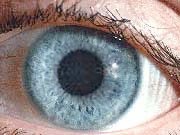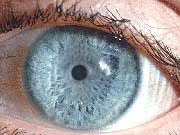Aperture
Most lenses have three basic controls.
Aperture
"Aperture" (or "f-stop") refers to the opening at the base of the lens that determines how much light enters the camera.
If more light is needed (in a darkish setting) the aperture must be opened large. If less light is needed (like on a sunny day) the aperture needs to be made small.
Ever notice how your pupil gets smaller when you go outside in a bright sunny day? Conversely, it gets big on a moonlit night? Check this out on a friend. Outside, the pupil (the black part of their eye) gets tiny--the size of a pinpoint. Indoors, it's huge--the size of a pea. That's because in the darkish indoors, the pupil opens up to "grab" as much light as it can. In the bright outdoors, the pupil gets small to cut down on the excess light.
Your pupil automatically adjusts to the incoming light all day long. Cameras can also be set to adjust automatically, but they don't do it as well as your eye.


INSIDE
OUTSIDE

